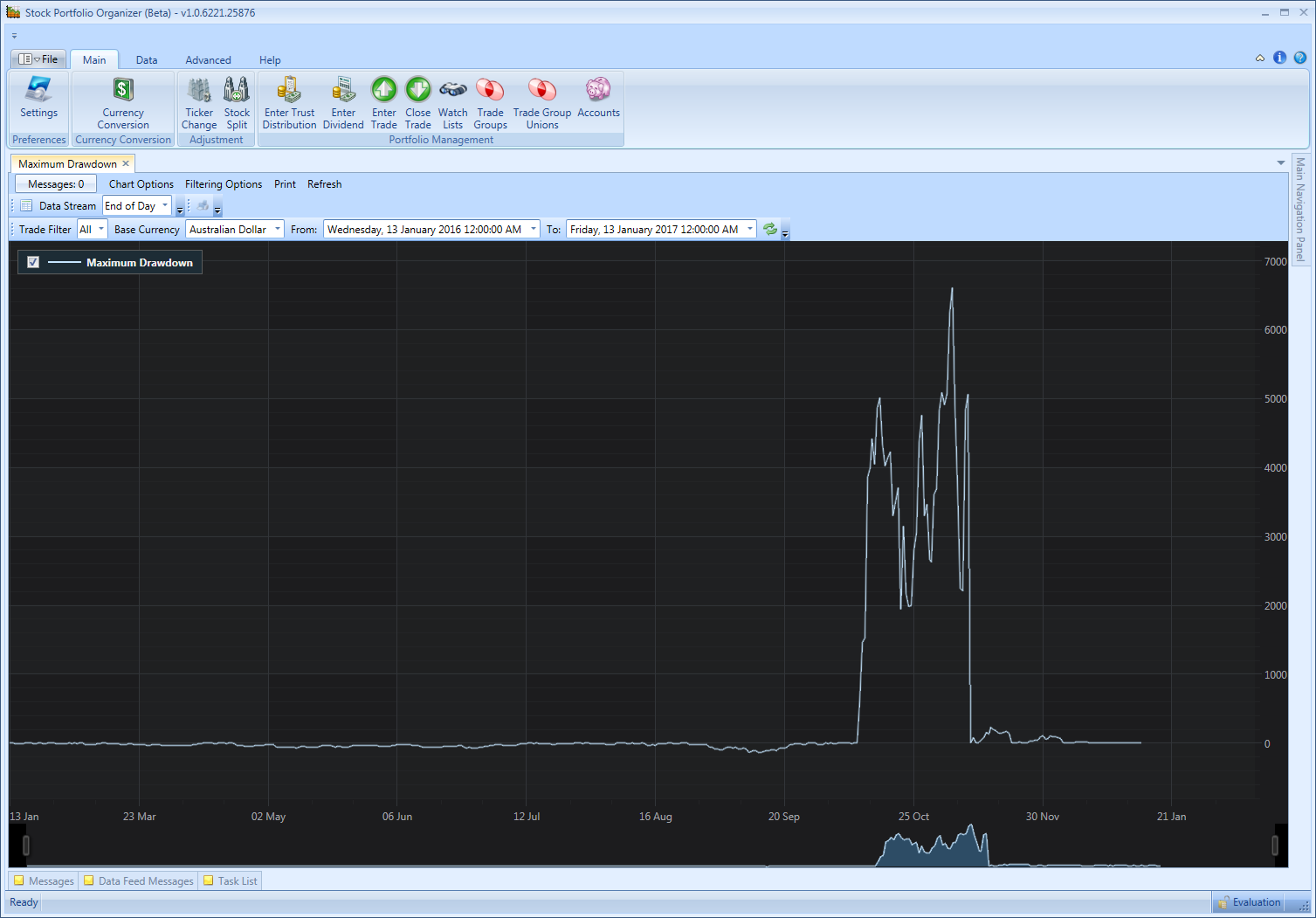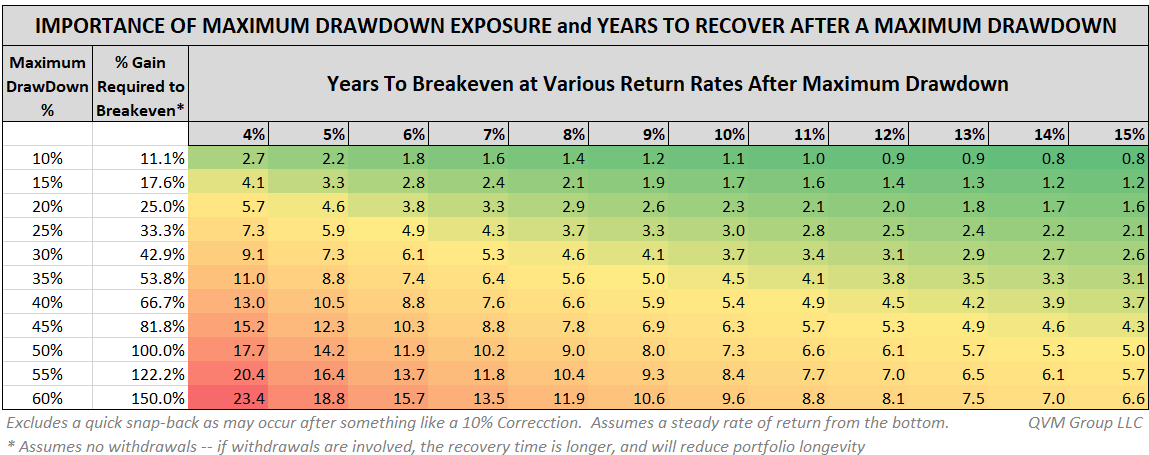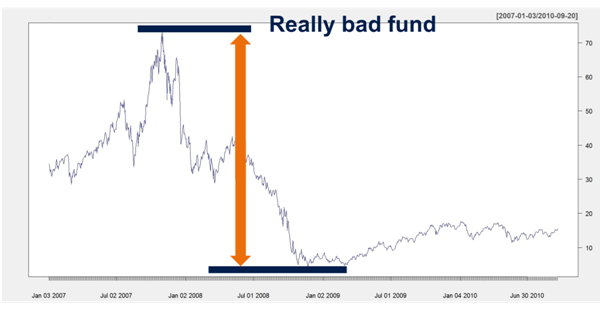

The vertical dashed line corresponds to the baseline case of 10% annualised volatility, 10-year window, 0.5 annualised Sharpe ratio and 0.0 autocorrelation. In the different panels, we vary the (A) time window and (B) Sharpe ratio. In all cases returns are normal and identically distributed. The figure shows probability of reaching a maximum drawdown of 1, 2, 3 and 4 sigma (annual standard deviations). Sensitivity of the Probability of a Maximum Drawdown to Key Parameters We modify the following assumptions at a time: (A) time window, 10 years baseline and (B) annualised Sharpe ratio, 0.5 baseline. Next, we consider how deviations from the baseline case assumptions impact the probability of hitting a drawdown level. The vertical, dashed lines correspond to drawdowns of size 1, 2, 3 and 4 annual standard deviations. The figure shows probability distribution for the maximum drawdown statistic using normal, IID monthly returns over a 10-year window with a 10% annualised volatility and 0.5 annualised Sharpe ratio (the baseline case). Probability Distribution for the Maximum Drawdown Statistic
ACCEPTABLE MAXIMUM DRAWDOWN FULL
In 1-in-10 cases, one even reaches a drawdown of three full annual standard deviations (or -30%).

So in almost half of the cases, one reaches a drawdown of two full annual standard deviations (or -20%) over the 10-year period, even though the annual Sharpe ratio is a respectable 0.5. The associated probability of reaching a maximum drawdown of that level or worse is given by the area under the curve to the left of the associated vertical line. We highlight with vertical lines maximum drawdown levels of 1, 2, 3 and 4 annual standard deviation (or sigma) moves, corresponding to -10%, -20%, -30%, and -40% drawdown levels. 2 Figure 1 shows the probability distribution of the maximum drawdown statistic for our baseline case: 10-year time window, 10% annualised volatility, 0.5 annualised Sharpe ratio, where each parameterisation is evaluated with 100,000 simulations of monthly returns for the evaluation window. We start with a simple setting of normal, independent and identically distributed (‘IID’) monthly returns.
ACCEPTABLE MAXIMUM DRAWDOWN DRIVERS
The key drivers of the maximum drawdown that we identify are: the evaluation horizon (time to dig a hole), Sharpe ratio (ability to climb out of a hole), and the persistence in risk (chance of having a losing streak). As such, drawdown rules might be considered ‘poor man’s volatility scaling’. From this perspective, a drawdown rule might be considered to have some similarities to volatility scaling managers who show behavioural aversion to being fired will reduce risk near down the drawdown limit. But we are very aware that the presence of a ‘drawdown rule’ will itself cause managers to act differently – nobody likes getting fired. We have not tried to identify the impact of drawdown rules on manager behaviour. This decision will be subject to two types of errors: a Type I error of replacing a good manager and a Type II error of mistakenly not firing a bad manager. Next, we introduce a framework to decide whether to replace a manager (or strategy). In the first part of this paper, we conduct a simulation study to determine the sensitivity of the probability of reaching a given maximum drawdown threshold to key assumptions. The maximum drawdown statistic is different from other metrics such as volatility and downside measures like skewness or semi-variance in that it crucially depends on the order in which the returns occur. The maximum drawdown statistic is appealing, as it is unambiguous in its calculation and captures the most unfavourable investment outcome: buying at the peak and selling at the bottom. For example, for hedge fund investments, money is often pulled out when a threshold for the maximum drawdown is crossed. When evaluating managers or strategies, investors pay close attention to the maximum drawdown, or the largest peak-to-trough return over the life of an investment.

To read the full academic paper, please visit: Introduction


 0 kommentar(er)
0 kommentar(er)
